Bean to Bar. The process
After more than 170 years of dedication, many of Simón Coll production methods retain their own distinctive characteristics, the result of professional criteria solidly established over time. An inheritance of the generations that preceded us and that have been the basis of our long history.
Selection of cocoa origin
At Simón Coll we think it is important to choose the origin of cocoa. The primary aromas of the cocoa bean are the result of factors such as the area of cultivation, the botanical variety, and the care of the farmer in the cultivation, selection and fermentation of cocoa.
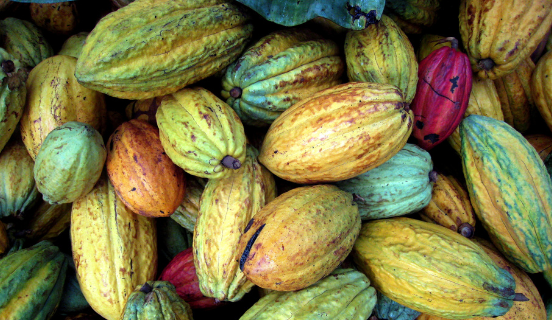
Harvest and fermentation
Fermentation triggers the formation of aroma and flavor, and can last more or less days, depending on the desired result.
The cocoa bean, along with its pulp or slime, is placed in wooden boxes, often covered with banana leaves, which will create the ideal conditions for the enzymes in the pulp to interact with the sugars in the pulp and start fermentation.
The cocoa bean, along with its pulp or slime, is placed in wooden boxes, often covered with banana leaves, which will create the ideal conditions for the enzymes in the pulp to interact with the sugars in the pulp and start fermentation.

Drying
The fermented cocoa is spread out on a surface and dried naturally in the sun. While drying, the cocoa's moisture level drops drastically from 60% to 7%.
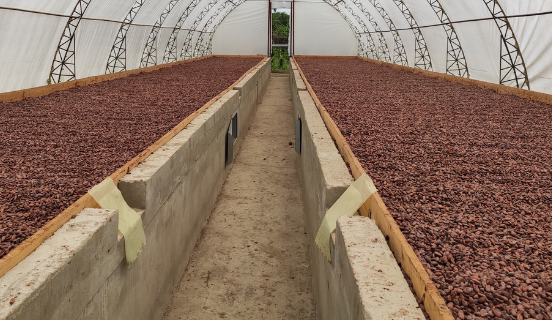
Cocoa reception and quality control
When the cocoa arrives at our factory, we verify that the previous fermentation and drying processes have been carried out correctly by selecting a representative sample of each batch.
A well-fermented cocoa bean should have a brown color, neither purplish nor black, which would indicate a deficient or incorrect fermentation. The existence of grooves all over the surface indicates that the fermentation is homogeneous and complete.
A well-fermented cocoa bean should have a brown color, neither purplish nor black, which would indicate a deficient or incorrect fermentation. The existence of grooves all over the surface indicates that the fermentation is homogeneous and complete.
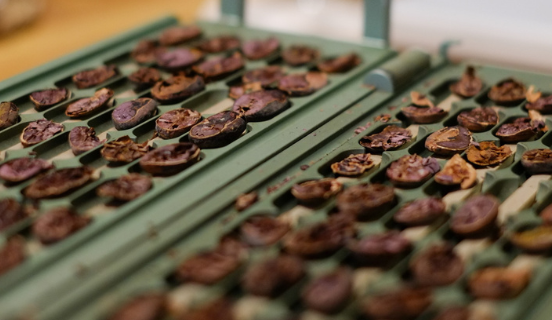
Cocoa roasting
During roasting, the cocoa develops its secondary aromas, which we associate with the chocolate flavor. The roasting time and temperature can vary according to the variety of cocoa, the humidity of the bean received and its size, and can range between 100º and 120º, and between 20 and 30 minutes.
Once the cocoa is roasted, we separate the husk and leave only the cocoa nibs. After sorting by size, the largest nibs are selected for the production of the Cacao Nibs product. The medium and small nibs will be used in the production of cocoa paste.
Once the cocoa is roasted, we separate the husk and leave only the cocoa nibs. After sorting by size, the largest nibs are selected for the production of the Cacao Nibs product. The medium and small nibs will be used in the production of cocoa paste.

Milling
The nibs are broken and ground by means of a stone mill and transformed into cocoa liquor, which, despite its name, does not contain alcohol. The liquor is dense, silky and bitter, and bright brown in color.
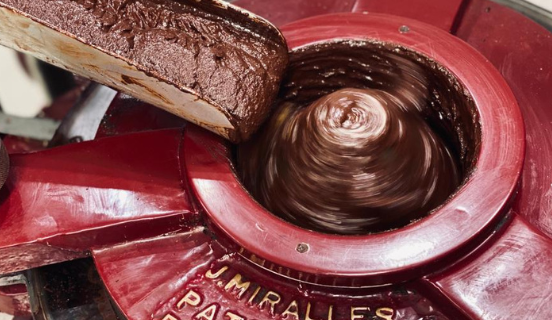
Mixing, refining and conching
To the cocoa liquor we add the rest of the ingredients such as sugar, milk, spices, according to each formula, and we mix them completely. The mixture is deposited in a cylinder refiner, which, when rotating, presses the mass and breaks its particles until they reach 16-18 microns, which are imperceptible to the palate.
During conching, the mixture is heated and stirred to eliminate any residual moisture it may contain and any volatile acids that are undesirable for a good final aroma. Depending on the product for which the chocolate is intended, conching can take hours or even days.
During conching, the mixture is heated and stirred to eliminate any residual moisture it may contain and any volatile acids that are undesirable for a good final aroma. Depending on the product for which the chocolate is intended, conching can take hours or even days.
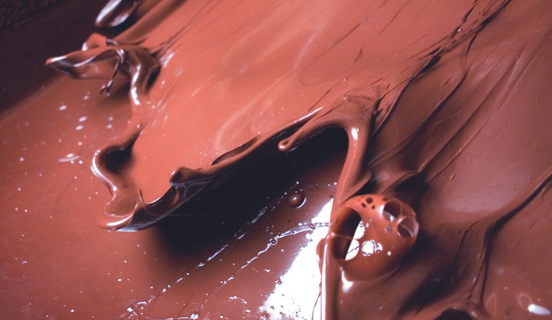
Tempering, molding and packaging
Tempering is the key to molding chocolate correctly so that it is shiny and breaks with a smooth cut. Tempering achieves, through the application of temperature, movement and time, the correct crystallization of the mass. The tempered chocolate is molded. Packaging is the final part of the process, when the product acquires its final image and is adequately protected to be marketed.


